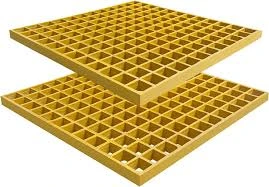loading...
- No. 9, Xingyuan South Street, Dongwaihuan Road, Zaoqiang County, Hengshui, Hebei, China
- admin@zjcomposites.com
- +86 15097380338
- Welcome to visit our website!
Design and Efficiency of Sectional Water Storage Tanks in Modern Infrastructure
Understanding Sectional Water Storage Tanks A Comprehensive Guide
Water storage is a vital aspect of modern infrastructure, particularly for residential, commercial, and industrial applications. Among the various designs available, sectional water storage tanks have gained widespread popularity due to their flexibility, durability, and ease of maintenance. In this article, we will explore the concept of sectional water storage tanks, their benefits, applications, and considerations for installation.
What Are Sectional Water Storage Tanks?
Sectional water storage tanks are prefabricated tanks comprised of multiple panels or sections. These sections are typically made from materials such as fiberglass, steel, or polyethylene, allowing for a variety of sizes and configurations. The modular nature of these tanks enables them to be easily transported and assembled on-site, making them an optimal choice for locations with space constraints or challenging logistics.
The sections are bolted or welded together to create a watertight structure capable of storing varying volumes of water, from a few hundred liters to several thousand liters. The design allows for easy expansion; additional sections can be added as water demand increases.
Benefits of Sectional Water Storage Tanks
1. Customizable Design One of the most significant advantages of sectional tanks is their customizable design. They can be tailored to fit specific spatial requirements and water storage needs. This flexibility makes them suitable for a wide range of applications, from households to large-scale industrial facilities.
2. Space Efficiency Unlike traditional storage tanks that require a considerable footprint, sectional tanks can be configured to maximize the use of available space. They can be built vertically, conserving horizontal area and making them ideal for urban environments.
3. Ease of Transportation and Assembly Sectional tanks are prefabricated and shipped in parts, allowing for easy transportation, especially to hard-to-reach locations. Their quick and straightforward assembly process reduces construction time and labor costs significantly.
4. Corrosion Resistance Depending on the material used, sectional tanks can offer excellent resistance to corrosion and chemical damage. This is particularly important in environments where water quality is a concern. For instance, fiberglass tanks can be an excellent choice as they do not rust and maintain water purity.
5. Cost-Effectiveness Generally, sectional water storage tanks provide an economical solution for large-scale water storage needs. Lower material costs and reduced installation time make them a financially viable option for many projects.
sectional water storage tank

Applications of Sectional Water Storage Tanks
Sectional water storage tanks are employed in various settings due to their versatility
. Common applications include- Residential Water Supply Homeowners use sectional tanks to store potable water, rainwater, or irrigation supplies. - Commercial and Retail Businesses, including restaurants and hotels, utilize these tanks for consistent water availability, enhancing service delivery. - Industrial Processes Factories and manufacturing units rely on sectional tanks for process water, firefighting water supply, and cooling systems. - Agricultural Use Farmers may use these tanks for livestock water supply, irrigation, and rainwater harvesting.
Considerations for Installation
When opting for a sectional water storage tank, several factors should be considered
1. Site Location Assess the site to determine the best configuration and accessibility for installation. Ensure the ground is stable to support the weight of the filled tank. 2. Volume Requirements Calculate the required storage capacity based on water usage patterns to ensure that the tank meets current and future needs.
3. Material Selection Choose materials that are appropriate for the intended use. For example, fiberglass is excellent for drinking water, while steel might be more suitable for industrial applications.
4. Regulatory Compliance Check local regulations regarding water storage tanks, including health standards, building codes, and environmental considerations.
5. Maintenance Plan for regular maintenance to ensure longevity and reliability of the tank. This includes inspections for leaks, cleaning, and ensuring that the inlet and outlet systems are functioning correctly.
Conclusion
Sectional water storage tanks offer a practical, customizable, and cost-effective solution for various water storage needs. Their ability to adapt to different environments and applications makes them a preferred choice for many sectors. By considering the factors outlined in this article, individuals and organizations can make informed decisions about incorporating sectional water storage tanks into their water management strategies.
-
GRP Structures: The Future of Lightweight, High-Performance EngineeringNewsJun.20,2025
-
FRP Water Tank: High-Performance Storage for Corrosive and Clean Water SystemsNewsJun.20,2025
-
FRP Square Tube: The New Industry Standard for Chemical and Structural ApplicationsNewsJun.20,2025
-
FRP Pultruded Profiles: The Ultimate Choice for Lightweight Structural StrengthNewsJun.20,2025
-
FRP Handrails: The Safer, Smarter, and Stronger Choice for Modern InfrastructureNewsJun.20,2025
-
FRP Grating: The Smart Solution for Durable, Lightweight Industrial FlooringNewsJun.20,2025
-
Why Choose a Galvanized Water Tank for Your Storage NeedsNewsMay.21,2025
